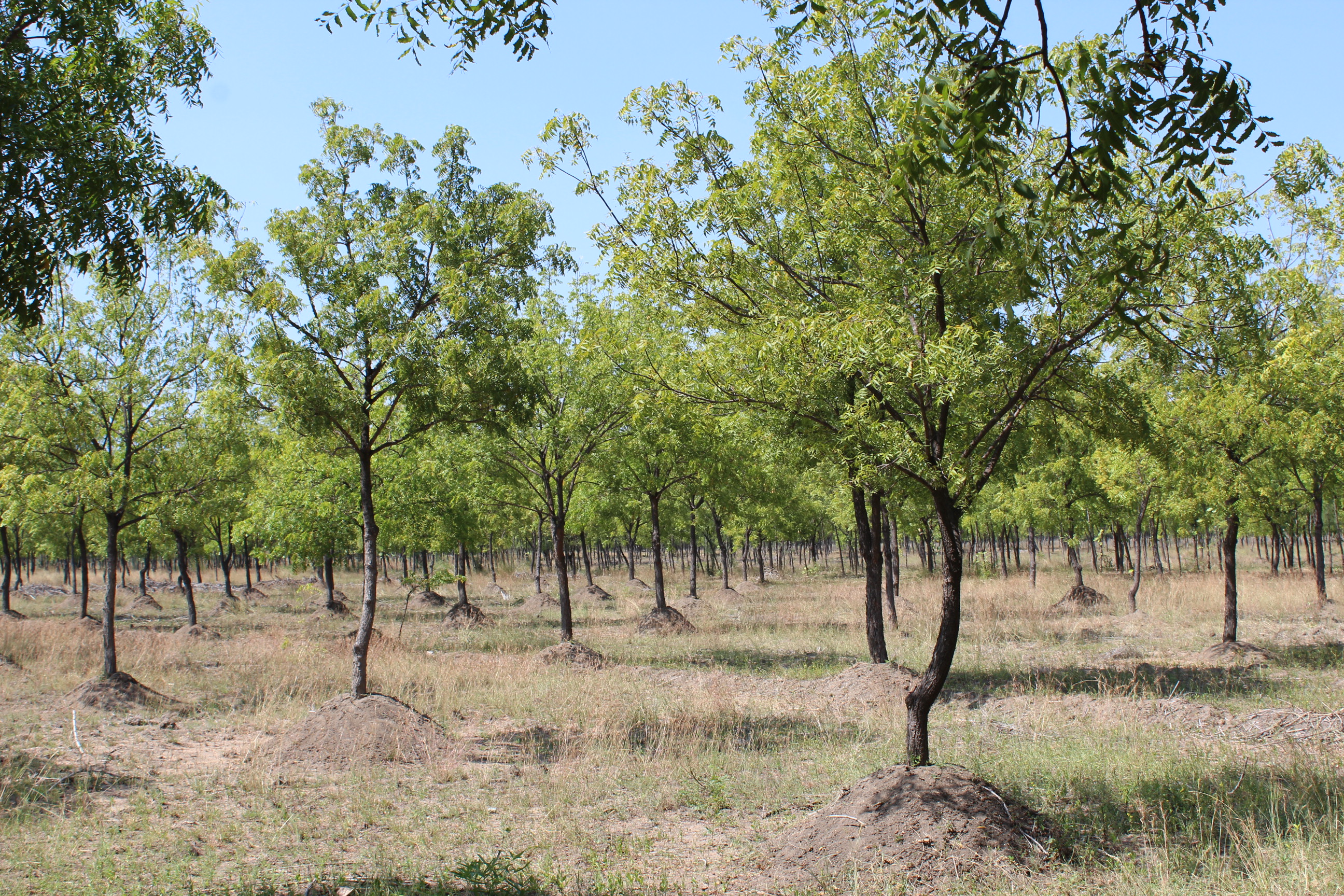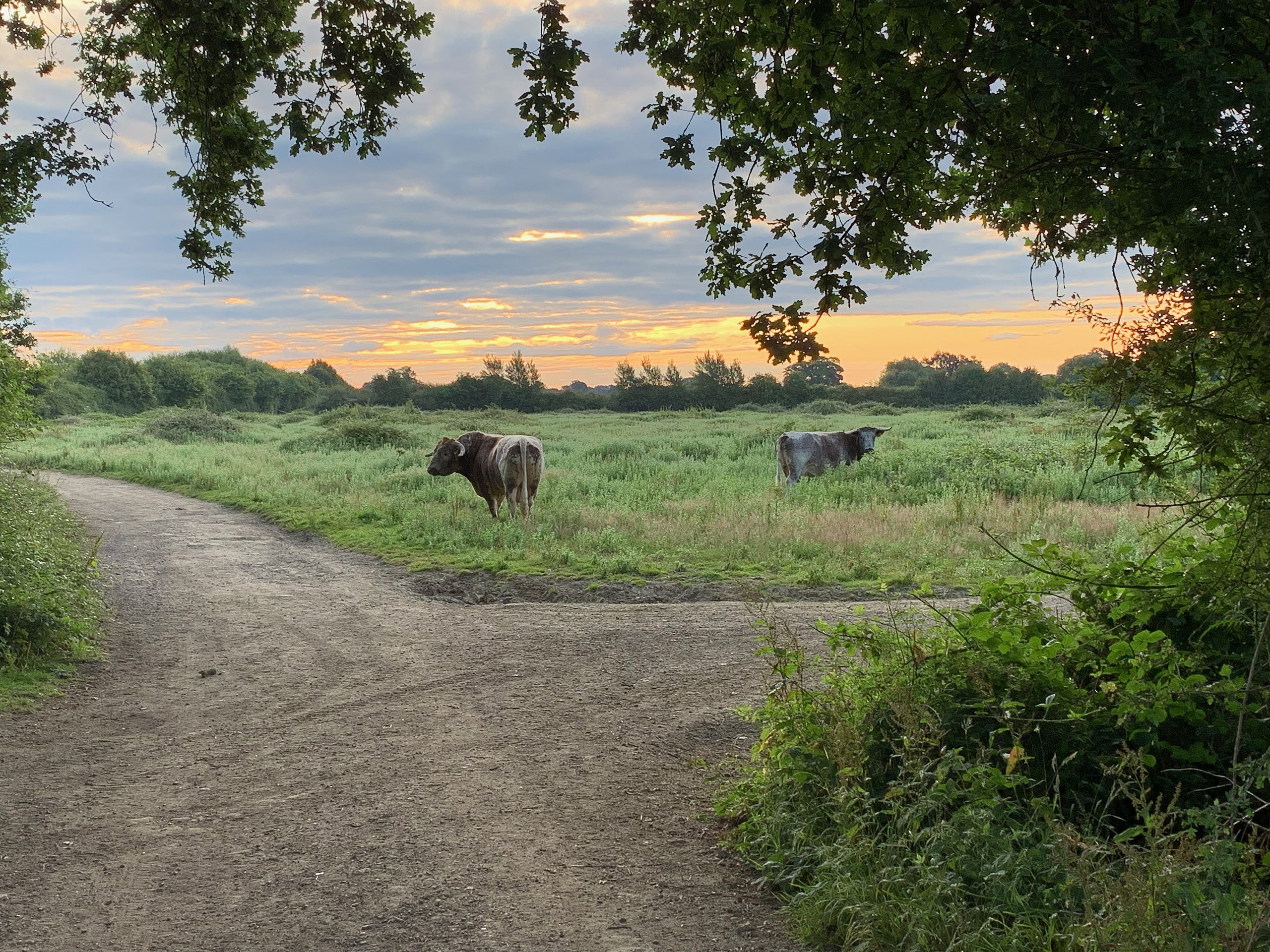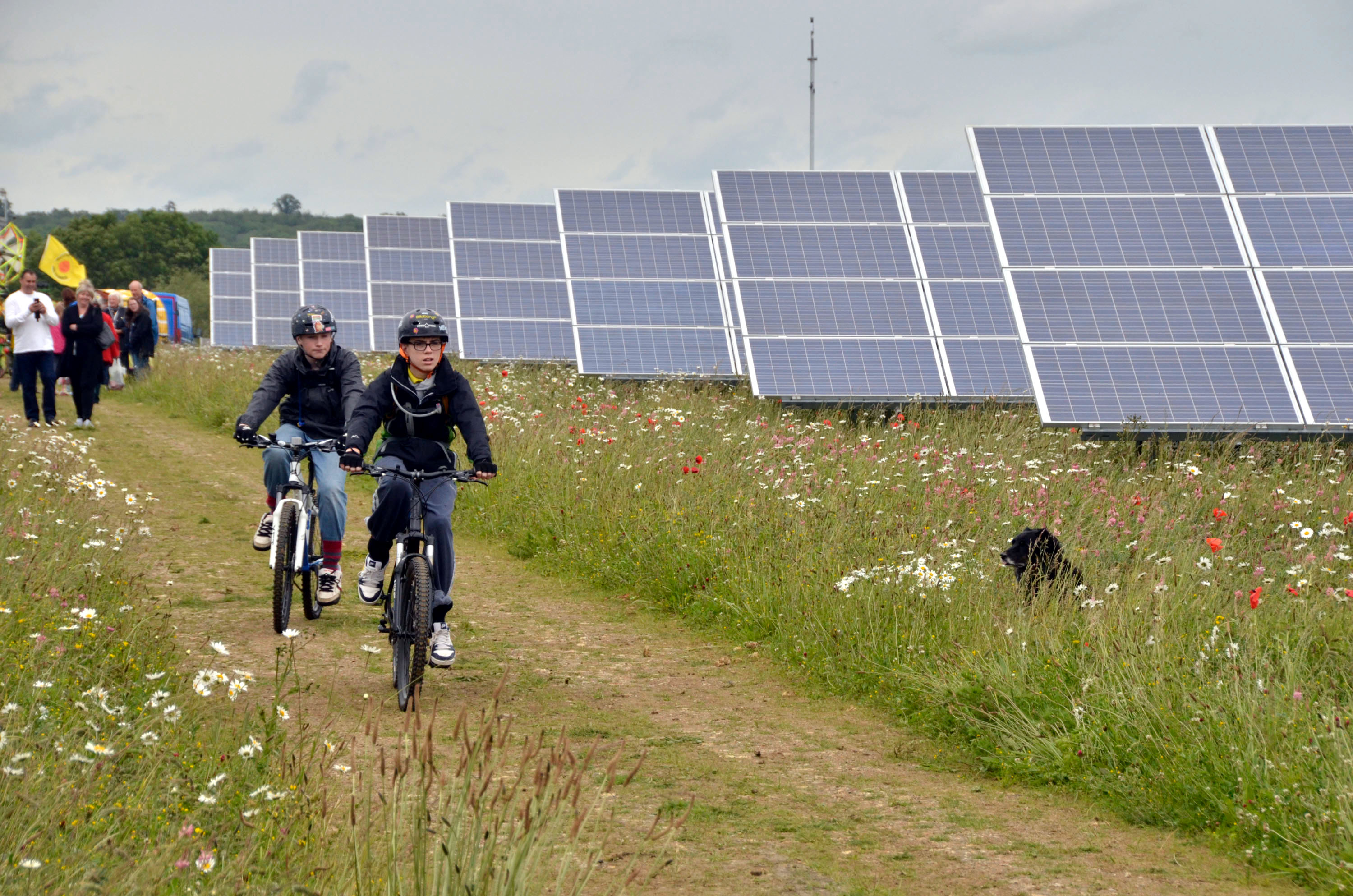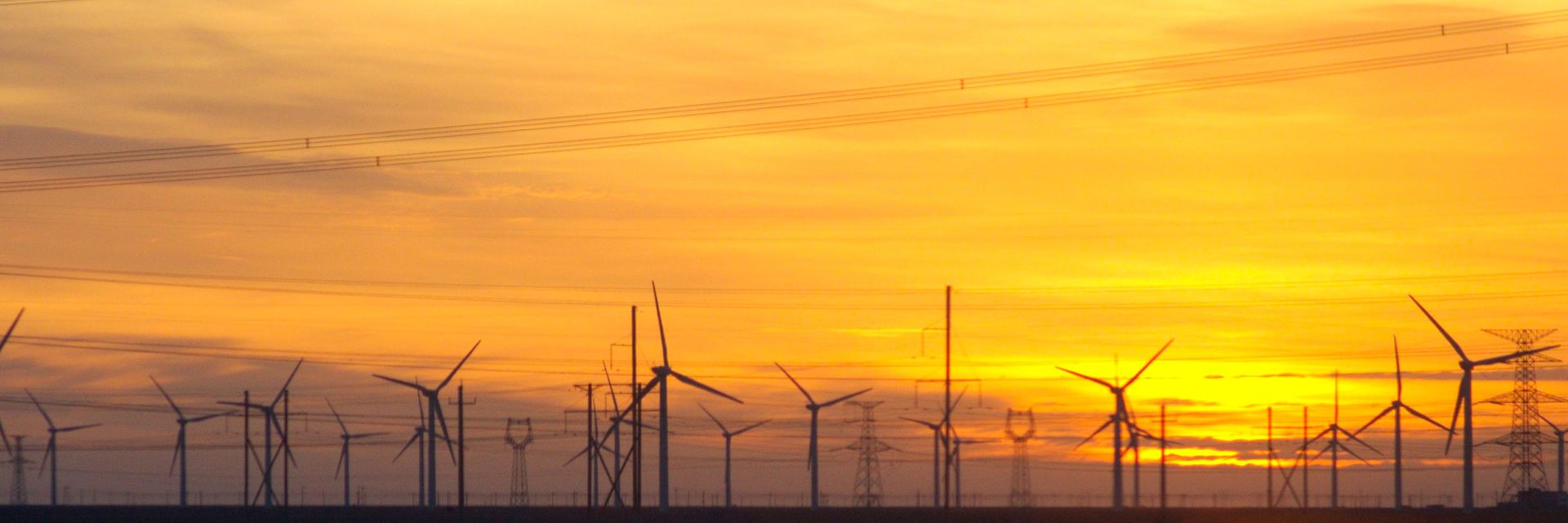In the face of global warming, agents of positive change are active across the globe, and their work may help us mitigate the worst effects of the crisis.
◊
You might remember a two-panel Internet cartoon from not long ago that featured a dog sitting at a table in a room that’s on fire. In the first frame, the canine appears to be thinking; in the second, he utters the immortal words of understatement, “This is fine,” as the flames lick ever closer.
The meme has been used to ridicule the laissez-faire attitude many of us have developed in the face of climate degradation and change. We are often too enmeshed in our own personal dramas to pay attention to the real-world issues around us, which may seem too overwhelming to consider. One such global issue is the changing climate. Since 1980, the rate of worldwide temperature increase has doubled, and the pace is quickening ever more as years pass.

“This is fine” meme. (Source: Vnmedeiros, via the Creative Commons Attribution-Share Alike 4.0 International license)
In addition, our planet’s recent rapid heat increase has affected many other aspects of our climate. It’s all connected: Rising global temperatures cause polar ice caps to melt, which exacerbates global warming. Storms are intensifying, and catastrophic flooding is on the rise. Heatwaves are deadlier than ever, and rising polar temperatures are causing fracturing glaciers, enormous breakaway ice shelves and icebergs, and rising sea levels. Elsewhere in the world, drought is a primary cause of spreading desertification, which affects water shortages and will likely make some regions uninhabitable.
And it’s not like all this is happening in the absence of human activity. To name just two human contributions: Deforestation in certain developing nations is rapidly eliminating the carbon sequestration potential of tree cover, amplifying the effects of climate change; also, the unfettered use of fossil fuels for energy means that carbon dioxide (CO2) concentrations in Earth’s atmosphere are ever-increasing and impacting climate warming.
For more on climate change and the efforts and projects around the world to mitigate its effects, check out the MagellanTV original documentary Atlas of a Changing Earth.
Climate Change: The Case for Optimism
Maybe by this point, you’re ready to tear out your hair and shout, “This is not fine!” to counter the meme-dog’s self-satisfied complacency. Go ahead; I won’t judge you. However, I’ll offer you a thought to consider: Maybe there’s more climate news than merely the (well-documented) bad stuff I just unspooled above. Scientists and some public policy leaders have not been cowed into inaction by the extent of climate change; rather, there’s been some big thinking – and big planning – going on recently that might get you down off that ledge.
Given our current understanding of the climate crisis, it is now more important than ever to take proactive steps. There are numerous initiatives being taken to combat climate change and mitigate its effects. Reforestation and rewilding are two. Renewable energy is also in ascendance. Wind farms and “solar cities” are two examples of renewable energy sources being used to replace fossil fuels (slowly but surely) and reduce the amount of carbon dioxide being released into the atmosphere. These renewable energy sources are not only helping reduce the effects of climate change, they are also providing clean energy to power our homes and businesses – and, with the increasing popularity of electric vehicles, even our cars.
We’ll explore all of this – the promise and the limits of these strategies – ahead.
Reforestation: Building ‘Great Green Walls’ around the World
One set of projects being undertaken in various sites internationally has the grand goals of both lessening climate change as well as reversing decades of poor public policy. Reforesting – that is, planting large numbers of tree seedlings and saplings in areas that lack, or have lost, tree cover – is a project with an increasing number of champions.
Projects are going on now in Africa and India. India’s Great Green Wall project, first proposed in 2015, aims to create a green cover of nearly 1,500 miles in northern India to combat desertification, among other goals. China, too, sees the value in this and has its own tree-planting project to contain the expansion of the Gobi Desert. There are also organizations in the U.S. that have pledged to plant one trillion trees in select sites within and beyond the 50 states. Yes, that’s a trillion, as in 1,000,000,000,000 new trees!
Together, these national and international projects are conjoined under the rubric of “Great Green Wall” initiatives. While each project is different in the details, they all serve to educate people to care for the trees and to change – or at least alter – native land use practices to prioritize conservation rather than destruction.

Tree farms, as this one in Virudhunagar, India, represent one step in attempts to reduce the impact of global warming. (Source: Sathishindexagro, via Creative Commons.)
Why Plant Trees?
So many trees have already been felled in the name of urbanization, farming, mining, and more, that it may seem humans don’t value trees and the cover they provide. But nature does value trees and the impact they have in keeping temperatures down and reducing CO2 in the atmosphere.
Trees absorb CO2 and use it to produce oxygen. This helps reduce the amount of CO2 in the air we breathe. It also helps cool the planet and slow global warming. Trees reduce air pollution by trapping dust and other pollutants in their leaves and bark. In addition, trees help prevent soil erosion. All these factors contribute to a healthier and more balanced environment.
According to recent studies, urban tree cover in public parks can lower ambient temperatures by as much as 10 degrees, even affecting areas within two blocks of the park.
Africa’s Great Green Wall initiative originally set out in 2007 to create a nearly 5,000-mile wall of trees stretching across the entire width of the continent, but progress stalled when it became clear that many trees planted in uninhabited areas were not surviving. In response, the African Union shifted its aims - to combat drought, desertification, and poverty - in the most appropriate ways given each participating country's most pressing needs.
Broadened objectives encompass an Africa-centric vision that includes promoting biodiversity, climate-smart agriculture, sustainable land management, and the creation of green jobs. The Great Green Wall initiative now works to build resilience to climate change and environmental degradation through the restoration of ecosystems and the creation of economic opportunities. Local communities lead the development and implementation of innovative approaches that empower people and conserve nature. The organization also works with partners to strengthen regional and global collaboration, and foster innovation. Trees planted appropriately help accomplish all these goals, and the results in the field show that grassroots solutions serve the people – and the environment – the best.
Rewilding to Restore Nature’s Climate-Healing Abilities
In addition to restoring Earth’s canopy of CO2-consuming trees, there are efforts in many places to return developed lands to unimpeded natural processes. This is called rewilding, and it encompasses both land and sea environments. Rewilding is a process of restoring depleted environments and ecosystems to their natural condition. It does this by reintroducing native species, removing non-native species, and protecting the area from human disturbances.

Long-horned cattle free-ranging on “rewilded” land in Horsham, U.K. (Source: PeterEastern, via Creative Commons)
By restoring the natural balance of species and habitats, rewilding can help protect and restore areas such as wetlands, which provide natural carbon storage and act as a buffer against flooding and other extreme weather events. Rewilding can also help create and maintain biodiversity, which helps to increase the resilience of ecosystems and make them better able to withstand the impacts of climate change. And rewilding can assist in reducing the amount of CO2 released into the atmosphere by increasing the amount of carbon stored in plants and soils.
This is happening in cities, including metropolitan areas in southeast Asia and Australia; rural areas, for example, across Europe and Britain; and even in oceans. France and the U.K. both have active programs to improve coastal areas and allow native fish stocks to grow and reclaim the sea. Rewilding our coastal waters will allow biodiversity to address climate change. When left to recover from destructive human practices, an abundance of life flourishes in these protected areas. And this will have an impact on, among other things, carbon sequestration.
The (Slow) Phase-out of Fossil Fuels in Favor of Renewables
We certainly know the damage being done to our environment by fossil fuels, including oil produced through drilling and fracking. It’s no secret that burning non-renewable fuels, including petroleum and natural gas, releases CO2 unnaturally into the atmosphere, contributing to rising temperatures, a seasonally depleted ozone layer, and an increase in the “greenhouse effect,” which means that CO2 trapped in the upper atmosphere absorbs heat from the Earth’s surface and releases it back down to Earth.
But the news on this front is not all bad. Because as much pressure as the oil companies place on governments to use, use, use non-renewable energy, coming up behind that are the little guys – the people promoting renewables including solar, wind, and other types of non-CO2-producing fuel. Advocates for this type of energy understand the vital difference between fossil fuels and renewables, and they are on a mission to educate potential users about the value of using solar and wind to power homes, industries, and even whole communities.

The largest community-owned solar farm in the world is in Oxfordshire, England. (Source: MrRenewables Westmill Solar Co-operative / Ben Cavanna, via Creative Commons)
There’s an economic argument to be made, to be sure. Harvesting the power of air through “wind farms” and the power of sunlight through “solar farms” requires considerably less investment when compared to the high costs of searching land and water for sources of fossil fuel, obtaining the fuel, and transporting it to market. It has a similarly negligible effect on the planet, compared with the high cost to the environment of coal mining, oil fracking, and drilling in pristine areas with the risk of oil spills and environmental damage.
There has been success to date – marginal though promising – as governments begin to invest in renewables rather than fossil fuels, though much more can be done. In the United States, for example, the federal government has put into place two important initiatives to encourage the implementation of large-scale renewable energy projects.
In 2022, U.S. President Joseph Biden released an executive order authorizing the use of the Defense Production Act to accelerate domestic production of clean energy technologies, including solar panel parts. The order prioritized the use of solar energy in government projects and set a goal for renewable-energy manufacturers to utilize solar in constructing a strengthened energy grid for the country.
In the same year, the U.S. Congress passed into law the Inflation Reduction Act, which includes a significant and far-reaching set of guidelines to encourage new energy initiatives and mitigate the effects of climate change. The bill dedicates a significant amount of funding – nearly $400 billion – for programs projected to reduce 2030 U.S. greenhouse gas emissions to 40 percent below 2005 levels.
Steady Steps toward a Better Future
Yes, this is just a start, and it won’t eliminate all factors that contribute to global warming. However, considered together, these varied projects will move the needle in the direction of alleviating risks associated with climate change.
To be frank, our worldwide climate is in a degraded state, and we’ve long past moved beyond simple, foolproof solutions. Given all we know, these high-leverage – but in some cases small-stakes – projects won’t magically reduce our global temperatures to pre-1980 levels. On the other hand, they may buy us time to conceive and implement farther-reaching plans down the road. Until then, our best bet is to slow the degradation where we can, and to the extent we can, while diversifying our efforts to reduce the impacts that may, for the time being, be out of our control.
Ω
Kevin Martin is Senior Writer for MagellanTV. He writes on various topics, including outer space, the fine arts, and modern history. He has had a long career as a journalist and communications specialist with nonprofit and for-profit organizations. He resides in Glendale, California.
Title Image: The largest wind farm in the world is in Gansu province, China. (Source: Popolon, via Creative Commons)

